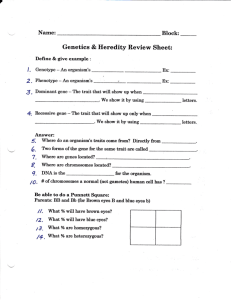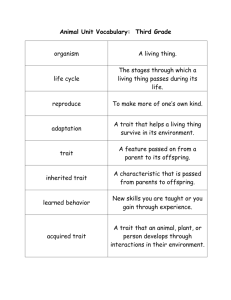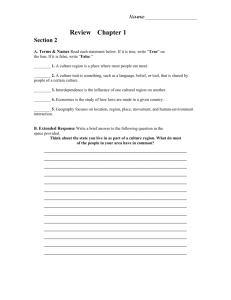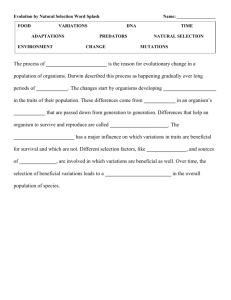Natural Variation Lab
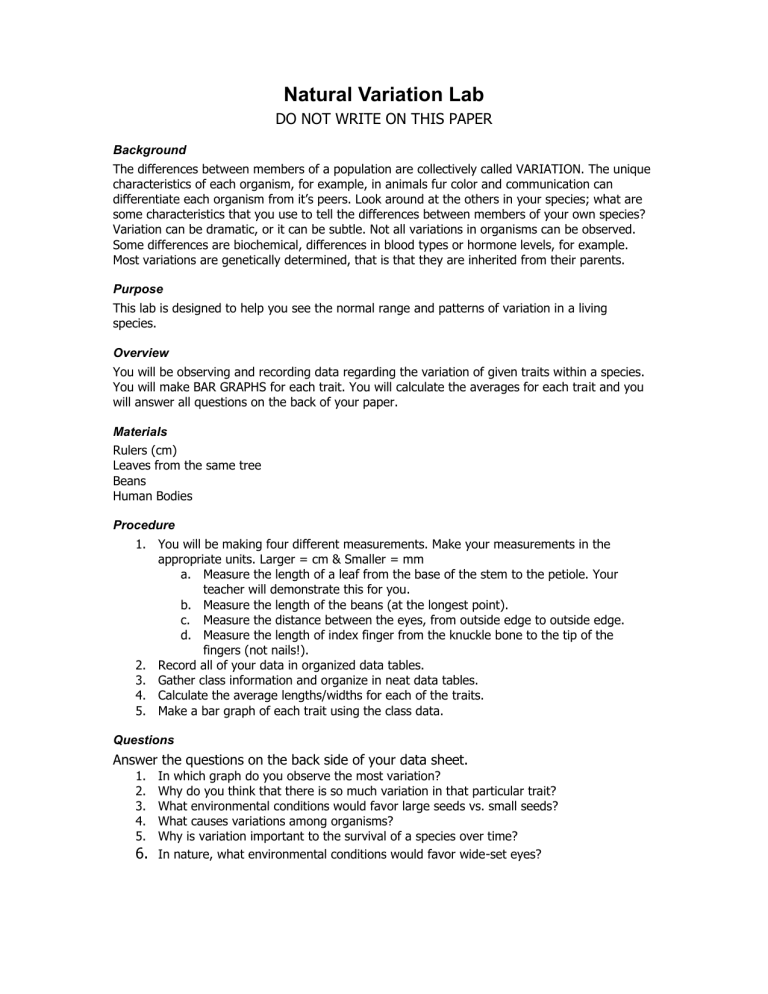
Natural Variation Lab
DO NOT WRITE ON THIS PAPER
Background
The differences between members of a population are collectively called VARIATION. The unique characteristics of each organism, for example, in animals fur color and communication can differentiate each organism from it’s peers. Look around at the others in your species; what are some characteristics that you use to tell the differences between members of your own species?
Variation can be dramatic, or it can be subtle. Not all variations in organisms can be observed.
Some differences are biochemical, differences in blood types or hormone levels, for example.
Most variations are genetically determined, that is that they are inherited from their parents.
Purpose
This lab is designed to help you see the normal range and patterns of variation in a living species.
Overview
You will be observing and recording data regarding the variation of given traits within a species.
You will make BAR GRAPHS for each trait. You will calculate the averages for each trait and you will answer all questions on the back of your paper.
Materials
Rulers (cm)
Leaves from the same tree
Beans
Human Bodies
Procedure
1.
You will be making four different measurements. Make your measurements in the appropriate units. Larger = cm & Smaller = mm
4.
a.
Measure the length of a leaf from the base of the stem to the petiole. Your teacher will demonstrate this for you. b.
Measure the length of the beans (at the longest point). c.
Measure the distance between the eyes, from outside edge to outside edge.
3.
d.
Measure the length of index finger from the knuckle bone to the tip of the fingers (not nails!).
2.
Record all of your data in organized data tables.
Gather class information and organize in neat data tables.
Calculate the average lengths/widths for each of the traits.
5.
Make a bar graph of each trait using the class data.
Questions
Answer the questions on the back side of your data sheet.
1.
In which graph do you observe the most variation?
2.
Why do you think that there is so much variation in that particular trait?
3.
What environmental conditions would favor large seeds vs. small seeds?
4.
What causes variations among organisms?
5.
Why is variation important to the survival of a species over time?
6.
In nature, what environmental conditions would favor wide-set eyes?



